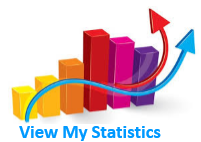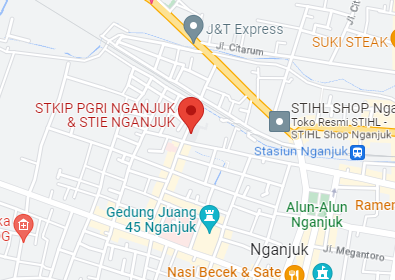Faktor-Faktor Yang Memengaruhi Kesiapan Pegawai Pemerintah Daerah Dalam Mengadopsi Teknologi Blockchain Pada Sistem Informasi Akuntansi Manajemen
DOI:
https://doi.org/10.59330/jmd.v1i2.28Kata Kunci:
Teknologi Blockchain, SIAM, Pegawai Pemerintah Daerah, Organisasi Perangkat Daerah, UTAUTAbstrak
Latar Belakang: Urgensi penerapan teknologi blockchain di organisasi pemerintahan muncul karena adanya tuntutan bagi organisasi dalam merancang sistem informasi akuntansi dan manajemen yang lebih aman, efektif dan efisien. Namun demikian Faktor-faktor apa saja yang dapat mempengaruhi penerimaan teknologi pada konteks organisasi pemerintahan perlu dilakukan eksplorasi secara lebih mendalam.
Tujuan: Penelitian ini bertujuan untuk mengetahui apa saja faktor yang dapat mempengaruhi pegawai Organisasi Perangkat Daerah (OPD) terkait kesiapan adopsi teknologi blockchain pada Sistem Informasi Akuntansi Manajemen.
Metode Penelitian: 127 pegawai Organisasi Perangkat Daerah (OPD) Kota Yogyakarta yang bekerja pada bidang pengoperasian aplikasi maupun sistem teknologi informasi dilibatkan sebagai responden penelitian berdasarkan teknik purposive sampling. Data penelitian dikumpulkan instrument kuesioner yang selanjutnya dianalisis menggunakan SEM-PLS.
Hasil Penelitian: Kondisi yang memfasilitasi dan ekspektasi kinerja berpengaruh terhadap niat untuk menggunakan teknologi blockchain. Namun demikian, pengaruh sosial tidak memiliki pengaruh terhadap niat untuk menggunakan teknologi blockchain.
Keaslian/Kebaruan Penelitian: Penelitian ini berkontribusi secara teoritis untuk menjawab faktor-faktor apa saja yang menyebabkan kesiapan pemerintah daerah untuk mengadopsi teknologi blockchain dengan menggunakan teori unified theory of acceptance and use of technology (UTAUT).
Referensi
Ahmad, M., & Hasibuan, Z. A. (2012). E-Government based on cloud environment in indonesia. In Seminar Nasional Aplikasi Teknologi Informasi (SNATI).
Alazab, M., Alhyari, S., Awajan, A., & Abdallah, A. B. (2021). Blockchain technology in supply chain management: an empirical study of the factors affecting user adoption/acceptance. Cluster Computing, 24(1), 83-101. https://doi.org/10.1007/s10586-020-03200-4
Alraja, M. N. (2016). The effect of social influence and facilitating conditions on e-government acceptance from the individual employees’ perspective. Polish Journal of Management Studies, 14(2), 18-27. 10.17512/pjms.2016.14.2.02
ALSaqa, Z. H., Hussein, A. I., & Mahmood, S. M. (2019). The impact of blockchain on accounting information systems. Journal of Information Technology Management, 11(3), 62-80. 10.22059/jitm.2019.74301
Astani, N. M. M. W., Ati, N. L. P. A. P. & Ernawaty(2021). Analysis of Acceptance of E-Health Application by Users in Primary Healthcare Center in Surabaya City. The Indonesia Journal of Public Health, 16(1), 66-78.
Bakri, M. H., Aziz, N. A. A., Razak, M. I. M., Hamid, M. H. A., Nor, M. Z. M., & Mirza, A. A. I. (2023). Acceptance of Ddkoin Blockchain using UTAUT model: a customer perspective approach. Calitatea, 24(192), 103-121.
Bandaso, T. I., Randa, F., & Mongan, F. F. A. (2022). Blockchain Technology: Bagaimana Menghadapinya?–Dalam Perspektif Akuntansi. Accounting Profession Journal (APAJI), 4(2), 97-115. https://doi.org/10.35593/apaji.v4i2.55
Barnes III, B. W., & Xiao, B. (2019). Organizational adoption of blockchain technology: an ecosystem perspective. DIGIT 2019 Proceedings 9.
Bashar, H. S., Purnamasari, H., & Priyanti, E. (2022). Analisis Penerapan Blockchain Di Indonesia, Menuju Revolusi Pelayanan Publik Dan Kearsipan. NUSANTARA: Jurnal Ilmu Pengetahuan Sosial, 9(8), 3023-3029.
Bashir, N. A. A. (2020). Penerapan Model UTAUT 2 Untuk Mengetahui Faktor-Faktor Yang Memengaruhi Penggunaan SIORTU. Elinvo (Electronics, Informatics, and Vocational Education), 5(1), 42-51. 10.21831/elinvo.v5i1.30636
Bhaskar, P., Tiwari, C. K., & Joshi, A. (2020). Blockchain in education management: present and future applications. Interactive Technology and Smart Education, 18(1), 1-17.
Cagigas, D., Clifton, J., Diaz-Fuentes, D., & Fernández-Gutiérrez, M. (2021). Blockchain for public services: A systematic literature review. IEEE Access, 9, 13904-13921.
Davis, F. D., Bagozzi, R. P., & Warshaw, P. R. (1989). User acceptance of computer technology: A comparison of two theoretical models. Management science, 35(8), 982-1003. https://doi.org/10.1287/mnsc.35.8.982
Devi, N. M. K., & Dharmadiaksa, I. B. (2021). Efektivitas Penerapan Sistem Informasi Akuntansi, Kecanggihan Teknologi, Internal Locus Of Control dan Kinerja Pegawai. E-Jurnal Akuntansi, 31(6), 1438.
Falwadiya, H., & Dhingra, S. (2022). Blockchain technology adoption in government organizations: a systematic literature review. Journal of Global Operations and Strategic Sourcing, 15(3), 473-501. https://doi.org/10.1108/JGOSS-09-2021-0079
Ferri, L., Spanò, R., Ginesti, G., & Theodosopoulos, G. (2021). Ascertaining auditors’ intentions to use blockchain technology: Evidence from the Big 4 accountancy firms in Italy. Meditari Accountancy Research, 29(5), 1063-1087. https://doi.org/10.1108/MEDAR-03-2020-0829
Francisco, K., & Swanson, D. (2018). The supply chain has no clothes: Technology adoption of blockchain for supply chain transparency. Logistics, 2(1), 2. https://doi.org/10.3390/logistics2010002
Gil-Cordero, E., Cabrera-Sánchez, J. P., & Arrás-Cortés, M. J. (2020). Cryptocurrencies as a financial tool: Acceptance factors. Mathematics, 8(11), 1974. https://doi.org/10.3390/math8111974
Hair Jr, J. F., Sarstedt, M., Hopkins, L., & G. Kuppelwieser, V. (2014). Partial least squares structural equation modeling (PLS-SEM). European Business Review, 26(2), 106–121. https://doi.org/10.1108/ebr-10-2013-0128
Hair, J. F., Risher, J. J., Sarstedt, M., & Ringle, C. M. (2019). When to use and how to report the results of PLS-SEM. European Business Review, 31(1), 2-24.
Handayani, T., & Sudiana, S. (2015). Analisis penerapan model UTAUT (Unified Theory of Acceptance and Use of Technology) terhadap perilaku pengguna sistem informasi (studi kasus: sistem informasi akademik pada STTNAS Yogyakarta). Angkasa: Jurnal Ilmiah Bidang Teknologi, 7(2), 165-180. http://dx.doi.org/10.28989/angkasa.v7i2.159
Hashimy, L., Jain, G., & Grifell-Tatjé, E. (2023). Determinants of blockchain adoption as decentralized business model by Spanish firms–an innovation theory perspective. Industrial Management & Data Systems, 123(1), 204-228. https://doi.org/10.1108/IMDS-01-2022-0030
Huy, P. Q., & Phuc, V. K. (2021). Accounting information systems in public sector towards blockchain technology application: the role of accountants’ emotional intelligence in the digital age. Asian Journal of Law and Economics, 12(1), 73-94. https://doi.org/10.1515/ajle-2020-0052
Jang, H. W., Yoo, J. J. E., & Cho, M. (2024). Resistance to blockchain adoption in the foodservice industry: moderating roles of public pressures and climate change awareness. International Journal of Contemporary Hospitality Management, 36(5), 1467-1489. https://doi.org/10.1108/IJCHM-09-2022-1127
Jum’a, L. (2023). The role of blockchain-enabled supply chain applications in improving supply chain performance: the case of Jordanian manufacturing sector. Management Research Review, 46(10), 1315-1333. https://doi.org/10.1108/MRR-04-2022-0298
Kassen, M. (2022). Blockchain and e-government innovation: Automation of public information processes. Information Systems, 103, 101862. https://doi.org/10.1016/j.is.2021.101862
Keyser, R., 2017. Blockchain: A Primer for Goverments. www.viewpointcloud.com/blog/government-technology/blockchain-governments-primer/
Khan, S., Shael, M., Majdalawieh, M., Nizamuddin, N., & Nicho, M. (2022). Blockchain for Governments: The Case of the Dubai Government. Sustainability, 14(11), 6576. https://doi.org/10.3390/su14116576
Khazaei, H. (2020). Integrating cognitive antecedents to UTAUT model to explain adoption of blockchain technology among Malaysian SMEs. JOIV: International Journal on Informatics Visualization, 4(2), 85-90. http://dx.doi.org/10.30630/joiv.4.2.362
Kominfo (2018). Terapkan Blockchain, Tingkatkan Transparansi dan Keamanan Layanan. Kominfo. https://www.kominfo.go.id/index.php/content/detail/12971/terapkan-blockchain-tingkatkan-transparansi-dan-keamanan-layanan/0/berita_satker
Kominfo.(2019). Pemerintah Bakal Implementasikan Teknologi Blockchain pada Aplikasi e-Government. Kominfo https://www.kominfo.go.id/content/detail/20929/pemerintah-bakal-implementasikan-teknologi-blockchain-pada-aplikasi-e-government/0/berita_satker.
Lee, K., Malerba, F., & Primi, A. (2020). The fourth industrial revolution, changing global value chains and industrial upgrading in emerging economies. Journal of Economic Policy Reform, 23(4), 359-370. https://doi.org/10.1080/17487870.2020.1735386
LiuLiu, M., Wu, K., & Xu, J. J. (2019). How will blockchain technology impact auditing and accounting: Permissionless versus permissioned blockchain. Current Issues in auditing, 13(2), A19-A29. https://doi.org/10.2308/ciia-52540
Luthfiyyah, Z. & Dewayanto, T., 2023. Implikasi Blockchain Pada kecurangan Akuntansi: Telaah Literatur Sistematis (SLR). Diponegoro Journal of Accounting, 12(4), 1-15.
Mahande, R. D., & Jasruddin. (2018). UTAUT Model: Suatu Pendekatan Evaluasi Penerimaan E-Learning pada Program Pascasarjana. https://doi.org/10.31227/osf.io/254j7
Marciano, L. L., Chandra, M. J., & Iskandar, V. (2022). Analisis Penerapan Model Utaut (Unified Theory Of Acceptance And Use Of Technology) Terhadap Minat Beli Pada Sayurbox. Jurnal Manajemen Perhotelan, 8(2), 80-91. https://doi.org/10.9744/jmp.8.2.80-91
McNamara, A. J., Shirowzhan, S., & ME Sepasgozar, S. (2024). Investigating the determents of intelligent construction contract adoption: a refinement of the technology readiness index to inform an integrated technology acceptance model. Construction Innovation, 24(3), 702-724. https://doi.org/10.1108/CI-10-2021-0191
Mensah, I. K. (2019). Factors influencing the intention of university students to adopt and use e-government services: An empirical evidence in China. Sage Open, 9(2), 2158244019855823. https://doi.org/10.1177/2158244019855823
Mukherjee, S., Baral, M. M., Lavanya, B. L., Nagariya, R., Singh Patel, B., & Chittipaka, V. (2023). Intentions to adopt the blockchain: investigation of the retail supply chain. Management Decision, 61(5), 1320-1351. https://doi.org/10.1108/MD-03-2022-0369
Ning, X., Ramirez, R., & Khuntia, J. (2021). Blockchain-enabled government efficiency and impartiality: using blockchain for targeted poverty alleviation in a city in China. Information Technology for Development, 27(3), 599-616. https://doi.org/10.1080/02681102.2021.1925619
Noor, M. U. (2020). Implementasi Blockchain di Dunia Kearsipan: Peluang, Tantangan, Solusi, atau Masalah Baru?. Khizanah al-Hikmah J. Ilmu Perpustakaan, Informasi, dan Kearsipan, 8(1), 86-96. https://doi.org/10.24252/kah.v8i1a9
Nuryyev, G., Wang, Y. P., Achyldurdyyeva, J., Jaw, B. S., Yeh, Y. S., Lin, H. T., & Wu, L. F. (2020). Blockchain technology adoption behavior and sustainability of the business in tourism and hospitality SMEs: An empirical study. Sustainability, 12(3), 1256. https://doi.org/10.3390/su12031256
Nuseir, M. T. (2021). Potential impacts of blockchain technology on business practices of bricks and mortar (B&M) grocery stores. Business Process Management Journal, 27(4), 1256-1274. https://doi.org/10.1108/BPMJ-06-2020-0267
PANRB.(2022). Indonesia Naik 11 Peringkat Hasil Survei e-Government PBB. PANRB https://menpan.go.id/site/berita-terkini/indonesia-naik-11-peringkat-hasil-survei-e-government-pbb
Park, K. O. (2020). A study on sustainable usage intention of blockchain in the big data era: Logistics and supply chain management companies. Sustainability, 12(24), 10670. https://doi.org/10.3390/su122410670
Pham, L. T., & Dau, T. K. T. (2022). Online learning readiness and online learning system success in Vietnamese higher education. The International Journal of Information and Learning Technology, 39(2), 147-165. https://doi.org/10.1108/IJILT-03-2021-0044
Prananda, A. A., & Datu, C. (2016). Peranan Sistem Informasi Akuntansi Manajemen Dalam Pegambilan Keputusan Investasi Asset Tetap Pada PT. Etmieco Sarana Laut Bitung. Jurnal EMBA: Jurnal Riset Ekonomi, Manajemen, Bisnis dan Akuntansi, 4(1). https://doi.org/10.35794/emba.4.1.2016.12375
Pratiwi, L. L. (2022). Implementasi Blockchain Pada Akuntansi dan Audit di Indonesia. Fair Value: Jurnal Ilmiah Akuntansi Dan Keuangan, 4(6), 2185-2203. https://doi.org/10.32670/fairvalue.v5i01.873
Queiroz, M. M., Fosso Wamba, S., De Bourmont, M., & Telles, R. (2021). Blockchain adoption in operations and supply chain management: empirical evidence from an emerging economy. International Journal of Production Research, 59(20), 6087-6103. https://doi.org/10.1080/00207543.2020.1803511
Queiroz, M. M., & Wamba, S. F. (2019). Blockchain adoption challenges in supply chain: An empirical investigation of the main drivers in India and the USA. International Journal of Information Management, 46, 70-82. https://doi.org/10.1016/j.ijinfomgt.2018.11.021
Rahmawati, M. I., & Subardjo, A. (2022). A bibliometric analysis of accounting in the blockchain era. Journal of Accounting and Investment, 23(1), 66-77. 10.18196/jai.v23i1.10650
Rita, R., & Fitria, M. H. (2021). Analisis faktor-faktor utaut dan trust terhadap behavioral intention pengguna bni mobile banking pada pekerja migran Indonesia. Jesya (Jurnal Ekonomi Dan Ekonomi Syariah), 4(2), 926-939. 10.36778/jesya.v4i2.453
Salam, N. R. A., & Ali, S. (2020). Determining factors of cloud computing adoption: A study of Indonesian local government employees. Journal of Accounting and Investment, 21(2), 312-333. 10.18196/jai.2102151
Sarfaraz, J. (2017). Unified theory of acceptance and use of technology (UTAUT) model-mobile banking. Journal of Internet Banking and Commerce, 22(3), 1-20.
Salem, S. & Ali, N., 2019. A proposed adoption model for blockchain technology using the unified theory of acceptance and use of technology (UTAUT). Open international journal of informatics, 7(Special Issue 2), 75-84.
Samartha, V., Shenoy Basthikar, S., Hawaldar, I. T., Spulbar, C., Birau, R., & Filip, R. D. (2022). A study on the acceptance of mobile-banking applications in India—unified theory of acceptance and sustainable use of technology model (UTAUT). Sustainability, 14(21), 14506. https://doi.org/10.3390/su142114506
Sedana, I. G. N., & Wijaya, S. W. (2009). Penerapan model UTAUT untuk memahami penerimaan dan penggunaan learning management system studi kasus: Experential e-learning of Sanata Dharma University. Jurnal Sistem Informasi, 5(2), 114-120. 10.21609/jsi.v5i2.271
Setyowati, W., Rahardja, U., Aini, Q., Santoso, N. P. L., & Prihastiwi, W. Y. (2021). Design financial accounting using blockchain approach in education. Media Riset Akuntansi, Auditing & Informasi, 21(2), 161-174. https://doi.org/10.25105/mraai.v21i2.9448
Sudarsono, B. G., & Lestari, S. P. (2018). Kajian Literatur Model Konseptual Keberhasilan E-Government. KOMIK (Konferensi Nasional Teknologi Informasi dan Komputer), 2(1). http://dx.doi.org/10.30865/komik.v2i1.981
Tanaamah, A. R., Wijaya, A. F., & Maylinda, S. A. (2021). Tata Kelola Teknologi Informasi Pada Sektor Publik: Penyelarasan Teknologi Informasi Dengan Visi Kepemimpinan. Jurnal Teknologi Informasi dan Ilmu Komputer (JTIIK), 8(6), 1-12. http://dx.doi.org/10.25126/jtiik.201743299
Tomić, N., Kalinić, Z., & Todorović, V. (2023). Using the UTAUT model to analyze user intention to accept electronic payment systems in Serbia. Portuguese Economic Journal, 22(2), 251-270. https://doi.org/10.1007/s10258-022-00210-5
Tran, L. T. T., & Nguyen, P. T. (2021). Co-creating blockchain adoption: theory, practice and impact on usage behavior. Asia Pacific Journal of Marketing and Logistics, 33(7), 1667-1684. https://doi.org/10.1108/APJML-08-2020-0609
Tresnawan, I. G. P. Y., Pradnyana, I. M. A., & Wirawan, I. M. A. (2020). Analisa Penerimaan Dan Penggunaan Sistem Informasi Desa (Sid) Dengan Model Unified Theory of Acceptance and Use of Technology (Utaut). INSERT: Information System and Emerging Technology Journal, 1(1), 51-61. https://doi.org/10.23887/insert.v1i1.25876
Venkatesh, V., Morris, M. G., Davis, G. B., & Davis, F. D. (2003). User acceptance of information technology: Toward a unified view. MIS quarterly, 425-478. https://doi.org/10.2307/30036540
Wibowo, A. H., Mursityo, Y. T., & Herlambang, A. D. (2019). Pengaruh Performance Expectancy, Effort Expectancy dan Social Influence terhadap Behavioral Intention dalam Implementasi Aplikasi SIMPG PT Perkebunan Nusantara XI Surabaya. Jurnal Pengembangan Teknologi Informasi dan Ilmu Komputer, 3(9), 9047-9053.
Zhang, Q., Khan, S., Khan, S. U., & Khan, I. U. (2023). Understanding Blockchain Technology Adoption in Operation and Supply Chain Management of Pakistan: Extending UTAUT Model With Technology Readiness, Technology Affinity and Trust. SAGE Open, 13(4), 21582440231199320. https://doi.org/10.1177/21582440231199320








